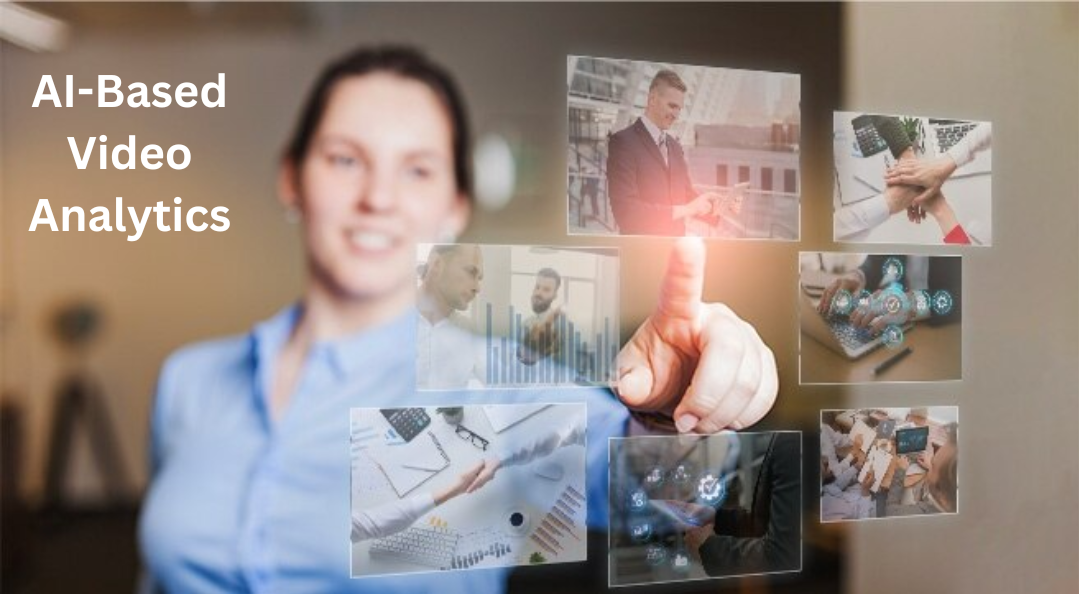The integration of Artificial Intelligence in the ever-changing security environment is a revolutionary aspect. Notably, the development of AI-based video analytics is the force that drives transformation in such a scenario. This article examines the complex implications of using AI-driven video analysis for surveillance and safety, dissecting its features, functional areas, and the revolution it heralds in conventional observation systems.
Understanding AI-Based Video Analytics
Artificial intelligence in video analytics refers to the use of artificial intelligence algorithms to process and interpret captured images from security cameras. Such systems can autonomously process a significant amount of video data as it is being collected, unlike traditional video surveillance, which requires manual monitoring. It uses the power of machine learning and computer vision as tools for detecting patterns, identifying objects, and making intelligent decision-making based on the analyzed information.
Enhanced Object Recognition
Enhanced object recognition is one of the great merits of AI-based video analytics. Normal monitoring systems might not be able to adequately differentiate objects or separate certain attributes. Nonetheless, AI algorithms may learn to recognize unique things, such as particular objects, faces, and behaviors, on a very accurate basis. Such an ability minimizes false alarms and increases total security surveillance accuracy.
Behavior Analysis and Anomaly Detection
In contrast to static object recognition, AI-based video analytics excels in behavioral analysis and detection of outliers. Such AI algorithms learn routine practices and patterns within an environment, allowing them to identify abnormal behaviors or events that diverge from accepted standards. It employs a proactive strategy useful for recognizing possible threats to security and unusual activities that necessitate early action.
Real-Time Threat Detection
AI-based video analytics makes it possible for security systems to be able to monitor and act in response to a threat when it is happening without any delay. The system helps with quick thinking on sensitive matters such as spotting unapproved access, alerting of suspicious activities, and informing the regulatory organs when a threat exists.
Suggest to read :- How Video Analytics Is Becoming An Integral Part Of Urban Governance
Intelligent Video Search and Retrieval
Intelligence into Video Search and Retrieval: AI-Based Video Analytics. With this technology, instead of combing through huge amounts of footage to locate any particular event, one could use AI algorithms to search for a certain object, person, or activity. Such a practice is not just cost-saving but also improves post-incident investigation.
Applications in Smart Cities
Smart cities are witnessing an increased uptake of AI-based analytics. They are integral to urban monitoring or traffic control. Video analytics enables the creation of a safer and more efficient urban environment by ranging from monitoring crowds in an event to optimizing traffic flow through real-time updated data.
Privacy Considerations and Ethical Use
The capabilities are indeed powerful, but there is great concern over privacy and responsible engagement of the technology. Increased sophistication of surveillance technology necessitates striking a balance in ensuring better security while recognizing individual’s privacy rights. For any AIs that are used in providing video analytics, robust regulation, and ethical guidelines will be important for governing their deployment as well as operation.
Challenges and Limitations
In spite of its revolutionary potentialities, AI is associated with some difficulties in regard to Video Analytics. This includes the need for large computing power, challenges with algorithmic biases, as well as continual improvement in order to make systems applicable to various local settings. To tackle these challenges, continuous research, development, and cooperation are necessitated by technologists, policy-makers, and ethicists.
Future Trends and Innovations
Therefore, moving forward, the prospects for AI video analysis are continuously improving. Furthermore, when AI is integrated into emerging technologies like Edge Computing and 5G networks, the capabilities of surveillance systems will be enhanced. Furthermore, facial recognition technology is becoming advanced, and there is the expected merging of AI with UAVs, which will revolutionize the security and surveillance environment.
ConclusionThe incorporation of AI-based video analytics is nothing less than a revolution in the video surveillance and security arena. This technology is reopening possibilities of monitoring and securing the environment from enhanced object recognition through real-time threat detection all the way in smart cities. Nevertheless, we must address the moral implications and privacy concerns that accompany the deployment of such powerful technologies. This manner allows us to capitalize on the powerful aspect of AI-video analytics for modernization and yet make sure that there is reasonable and secure deployment of this technology in our connected world.



